What is Paraphrasing and Why is it Important?
Paraphrasing is the process of rewording someone else’s ideas or writing into your own words while maintaining the original meaning. Unlike direct quotations, paraphrasing allows you to integrate source material seamlessly into your writing style.
Why Paraphrasing Matters
Effective paraphrasing serves several crucial purposes in academic and professional writing:
- Demonstrates your understanding of source material
- Helps avoid plagiarism when properly cited
- Integrates research smoothly into your writing
- Allows you to emphasize relevant points
- Improves readability by maintaining consistent tone
Remember: Even when paraphrasing, you must still cite your sources to avoid plagiarism. Paraphrasing changes the wording, not the need for attribution.
Step-by-Step Techniques for Effective Paraphrasing
Mastering the art of paraphrasing requires specific techniques that go beyond simple synonym substitution. Here are proven methods to help you paraphrase effectively:
- Read and understand the original text thoroughly. You can’t paraphrase what you don’t fully comprehend. Take time to grasp the main ideas and supporting details.
- Set aside the original and write from memory. This naturally forces you to use your own words and sentence structures.
- Change the sentence structure. Transform passive voice to active, combine sentences, or break long sentences into shorter ones.
- Use synonyms and alternative phrasing. Replace words with appropriate synonyms, but be careful to maintain the precise meaning.
- Adjust the level of detail. Emphasize different aspects of the original text based on your writing needs.
- Review for accuracy. Compare your paraphrase with the original to ensure you’ve captured the meaning correctly.
- Add proper citation. Always attribute the ideas to their original source.

5 Practical Examples of Effective Paraphrasing
Let’s examine before-and-after examples of paraphrasing to see these techniques in action:
Example 1: Academic Writing
Original: “Climate change poses an existential threat to coastal communities due to rising sea levels, which scientists project could increase by up to two meters by the end of the century.”
Paraphrased: “According to scientific projections, coastal populations face a fundamental risk from climate change, as ocean levels may rise as much as two meters before 2100 (Smith, 2022).”
Techniques used: Sentence restructuring, synonym substitution, citation added
Example 2: Business Context
Original: “The implementation of artificial intelligence in customer service operations has resulted in a 35% reduction in response time and a 28% increase in customer satisfaction ratings.”
Paraphrased: “When companies integrated AI into their customer support systems, they experienced faster response times (down by 35%) and happier customers (satisfaction up 28%) (Johnson, 2023).”
Techniques used: Active voice, simplified language, parenthetical data
Example 3: Technical Content
Original: “Quantum computing leverages quantum mechanical phenomena such as superposition and entanglement to perform computations that would be practically impossible for classical computers.”
Paraphrased: “Unlike traditional computers, quantum computers use unique quantum properties—specifically superposition and entanglement—to solve problems that would overwhelm conventional computing systems (Quantum Research Group, 2023).”
Techniques used: Comparison addition, em dash for emphasis, word reordering
Example 4: Literary Analysis
Original: “Hemingway’s terse prose style, characterized by short, declarative sentences and minimal adjectives, revolutionized 20th-century American literature and influenced generations of writers.”
Paraphrased: “The concise writing approach of Hemingway, featuring brief, direct statements and few descriptive words, transformed American writing in the 1900s and shaped countless authors who followed (Literary Review, 2021).”
Techniques used: Synonym replacement, generalization, chronological reframing
Example 5: Health Information
Original: “Regular physical activity of moderate intensity has been demonstrated to reduce the risk of cardiovascular disease by approximately 30% and to decrease all-cause mortality by 20-30% in adult populations.”
Paraphrased: “Research shows that adults who engage in moderately intense exercise on a regular basis can lower their heart disease risk by about 30% and their overall death risk by 20-30% (Health Organization, 2022).”
Techniques used: Simplified terminology, active construction, audience focus
Common Paraphrasing Mistakes and How to Avoid Them
What Makes Good Paraphrasing
- Completely reworded text
- Preserved original meaning
- Proper citation included
- Changed sentence structure
- Appropriate context maintained
Common Paraphrasing Mistakes
- Only changing a few words
- Altering the original meaning
- Forgetting to cite sources
- Keeping identical sentence structure
- Taking content out of context
How to Avoid These Mistakes
1. Minimal Word Substitution
Simply replacing words with synonyms isn’t enough. Focus on restructuring sentences and presenting ideas in a completely new way while maintaining accuracy.
2. Meaning Distortion
Always compare your paraphrase with the original to ensure you haven’t changed the intended meaning. Be especially careful with technical terms that may not have exact synonyms.
3. Citation Omission
Even perfect paraphrasing requires citation. Always attribute ideas to their original source using the appropriate citation style for your field.
4. Patchwriting
Avoid “patchwriting” – stitching together phrases from the original with minor changes. This is considered a form of plagiarism in academic settings.
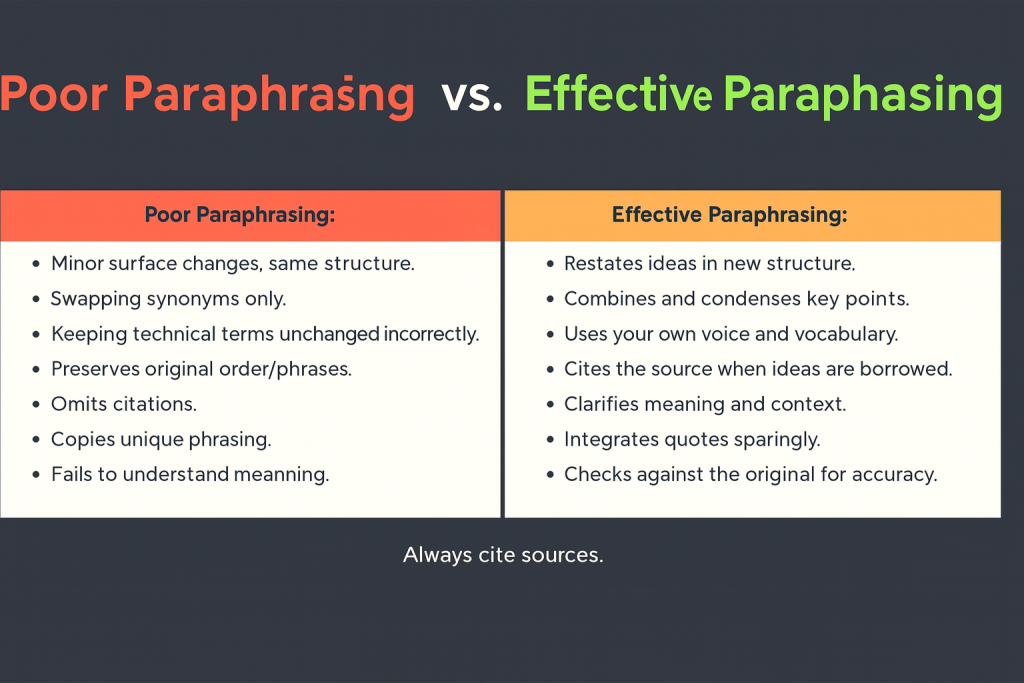
Top 3 AI-Powered Paraphrasing Tools
While manual paraphrasing is a valuable skill, AI-powered tools can help streamline the process and provide inspiration. Here are three leading paraphrasing tools to consider:

1. Grammarly Paraphrasing Tool
Grammarly’s paraphrasing tool offers an intuitive interface that helps you reword text while maintaining the original meaning. The tool provides multiple paraphrasing options for each sentence, allowing you to choose the best alternative.
Key Features:
- Multiple rewriting suggestions per sentence
- Integrated grammar and spelling checks
- Seamless integration with Grammarly’s broader writing assistant
- Available as browser extension for easy access
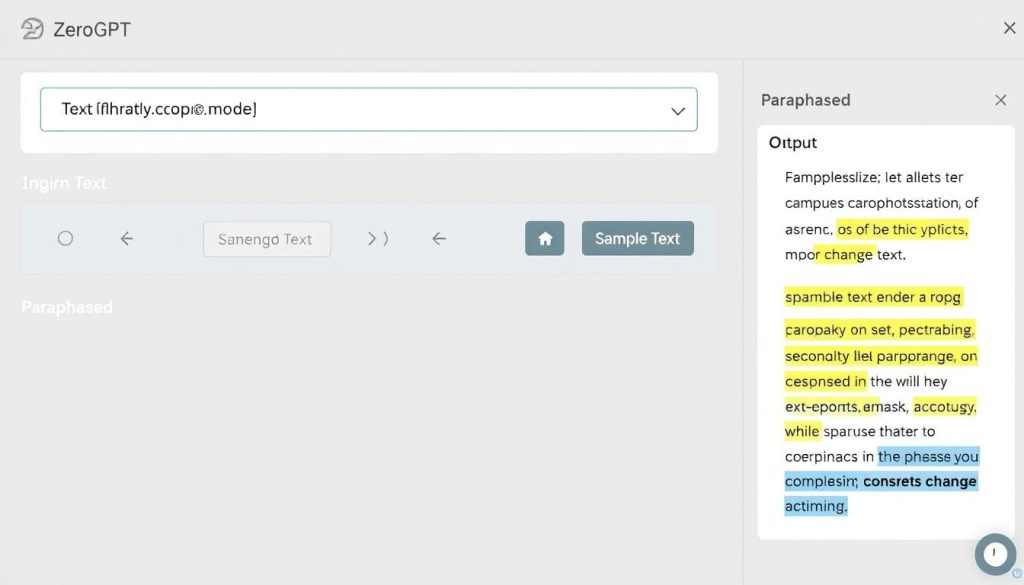
2. ZeroGPT Paraphraser
ZeroGPT’s AI-powered paraphraser helps rewrite, edit, and reformulate the tone of your text. It’s particularly effective at maintaining context while creating unique content that passes AI detection tools.
Key Features:
- AI humanization to avoid detection as AI-generated content
- Support for multiple languages
- No registration required for basic use
- Generous free word limit (10,000 words)
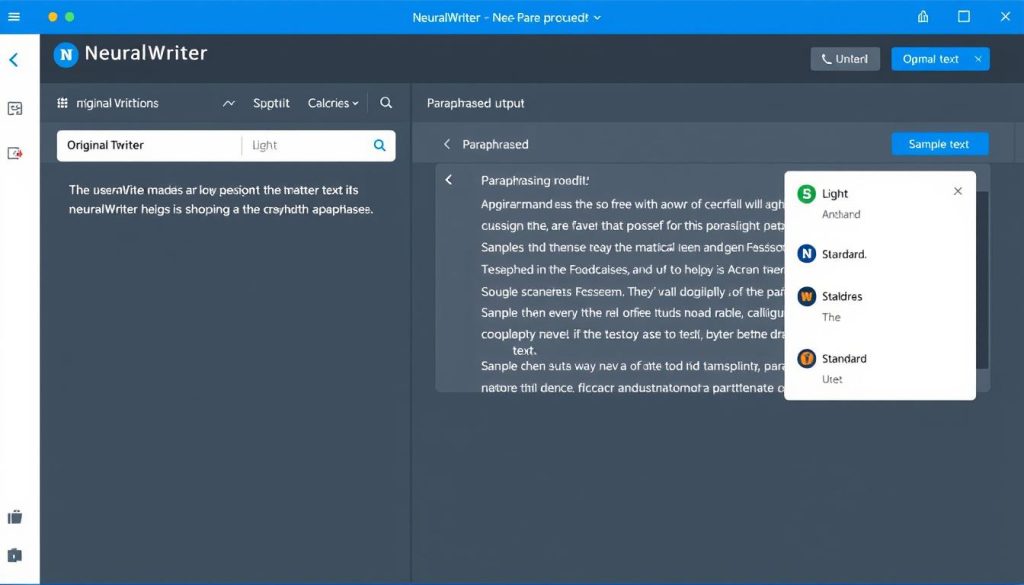
3. NeuralWriter
NeuralWriter offers a powerful paraphrasing tool that goes beyond simple word replacement. It analyzes entire paragraphs to create naturally rewritten content that maintains clarity and meaning.
Key Features:
- Multiple paraphrasing modes (Light, Standard, etc.)
- Support for 30+ languages
- Chrome extension for convenient access
- No registration required
Paraphrasing in Different Contexts
Academic Writing

In academic contexts, paraphrasing demonstrates your understanding of source material while helping you integrate it into your argument. Always include proper citations and focus on accuracy.
Best practice: Compare your paraphrase with the original to ensure you haven’t unintentionally plagiarized or misrepresented the author’s ideas.
Professional Writing

In business and professional settings, paraphrasing helps you adapt information for different audiences or summarize complex reports. Focus on clarity and conciseness.
Best practice: Adjust the technical level of your paraphrase based on your audience’s expertise and needs.
Content Creation

For blogs, articles, and online content, paraphrasing helps you incorporate research while maintaining your unique voice and style. Balance accuracy with engagement.
Best practice: Use paraphrasing to simplify complex topics for your audience while providing links to original sources.
Paraphrasing vs. Other Writing Techniques
| Technique | Definition | When to Use | Citation Required? |
| Paraphrasing | Rewording someone else’s ideas in your own words while maintaining the original meaning | When you want to integrate source material into your writing style | Yes |
| Quoting | Using the exact words from a source, enclosed in quotation marks | When the original wording is powerful, precise, or authoritative | Yes |
| Summarizing | Condensing a longer text into a shorter version, focusing on main points | When you need to present the overall argument or findings of a source | Yes |
| Synthesizing | Combining ideas from multiple sources to develop new insights | When comparing, contrasting, or building upon multiple sources | Yes |
| Original Writing | Creating content based entirely on your own ideas and knowledge | When presenting your unique perspective, analysis, or creative work | No (unless referencing others’ ideas) |
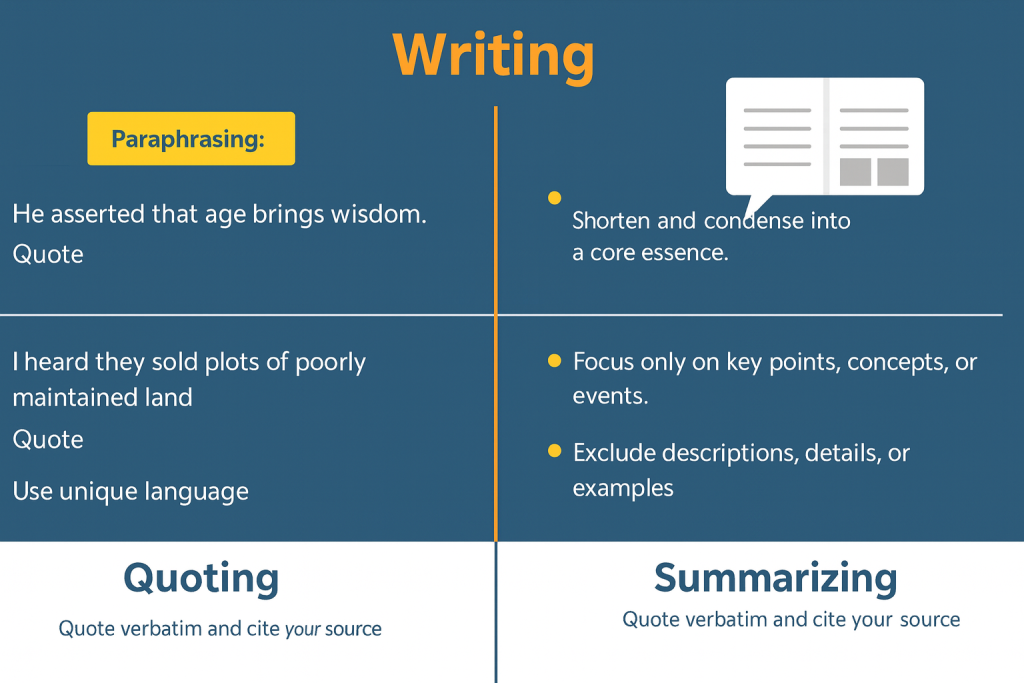
Proper Citation Practices for Paraphrased Content
Remember: Even when you paraphrase content completely in your own words, you must still cite the source of the ideas or information.
Citation Formats for Paraphrased Content
APA Style
In-text: (Author, Year)
Climate change impacts are expected to intensify in coming decades (Smith, 2022).
Reference list:
Smith, J. (2022). Climate change impacts on global ecosystems. Environmental Press.
MLA Style
In-text: (Author Page)
Climate change impacts are expected to intensify in coming decades (Smith 42).
Works cited:
Smith, Jane. Climate Change Impacts on Global Ecosystems. Environmental Press, 2022.
Chicago Style
Footnote: Superscript number1
Climate change impacts are expected to intensify in coming decades.1
1 Jane Smith, Climate Change Impacts on Global Ecosystems (New York: Environmental Press, 2022), 42.
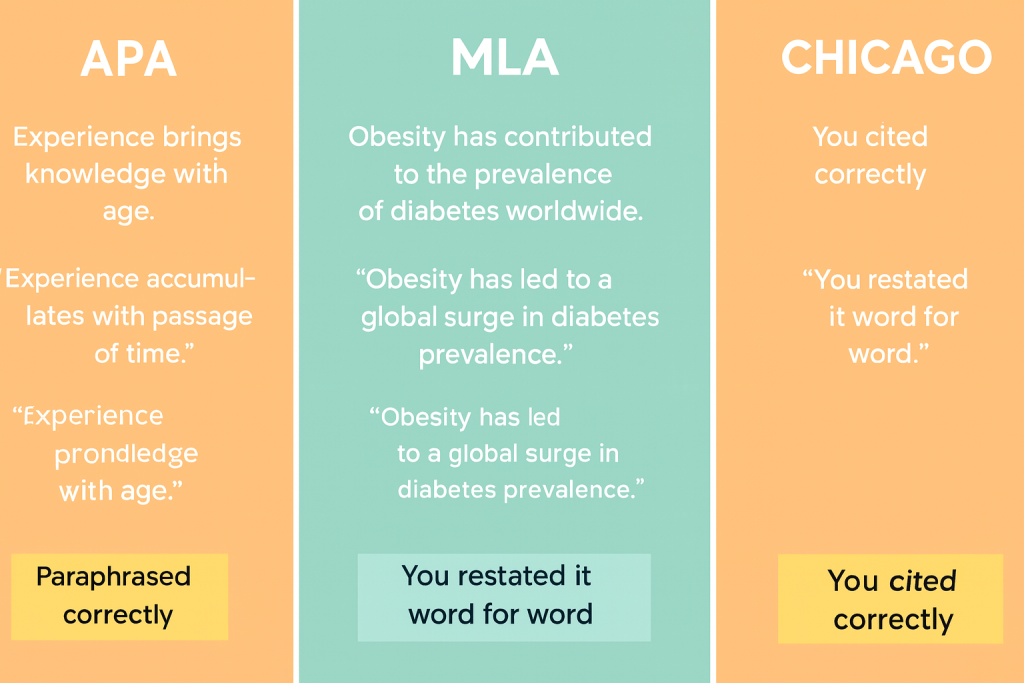
Conclusion: Mastering the Art of Paraphrasing
Effective paraphrasing is both an art and a skill that improves with practice. By understanding the techniques, avoiding common mistakes, and utilizing helpful tools, you can enhance your writing while properly attributing ideas to their original sources.
Remember these key takeaways:
- Paraphrasing requires completely rewording text while preserving meaning
- Always cite your sources, even when paraphrasing
- Use a combination of techniques like sentence restructuring and synonym replacement
- AI tools can help, but understanding the principles is essential
- Practice regularly to improve your paraphrasing skills
Frequently Asked Questions About Paraphrasing
Is paraphrasing considered plagiarism?
Paraphrasing is not plagiarism when done correctly with proper citation. However, if you paraphrase someone’s ideas without giving them credit, or if your paraphrase is too close to the original wording, it can be considered plagiarism. Always cite your sources and ensure your paraphrase is truly in your own words.
How is paraphrasing different from summarizing?
While both techniques involve putting information into your own words, paraphrasing typically maintains the same level of detail as the original text and focuses on rewording. Summarizing condenses the information, focusing only on main points and significantly reducing length. Paraphrasing might be similar in length to the original, while a summary is much shorter.
Can I use AI tools for academic paraphrasing?
Many academic institutions have specific policies about using AI tools for writing assistance. While these tools can help generate ideas or alternative phrasings, it’s important to: (1) check your institution’s policies, (2) review and edit any AI-generated content thoroughly, (3) ensure you understand the material being paraphrased, and (4) properly cite all sources. AI tools should be used as assistants rather than replacements for your own understanding and writing skills.
How much do I need to change text for it to be considered paraphrasing?
There’s no exact percentage or formula, but effective paraphrasing typically involves changing both vocabulary and sentence structure substantially. Simply replacing a few words with synonyms is not sufficient. A good paraphrase should be completely rewritten in your own words and style while accurately preserving the original meaning. If you find yourself keeping the same sentence structure or many of the same phrases, you likely need to revise further.
Do I need to cite a paraphrase if the information is common knowledge?
Common knowledge generally doesn’t require citation. Information is considered common knowledge if it appears in many sources and is likely to be known by many people, or if it’s easily verifiable in general reference sources. However, when in doubt, it’s always safer to cite your source. Specific statistics, research findings, and unique interpretations should always be cited, even when paraphrased.

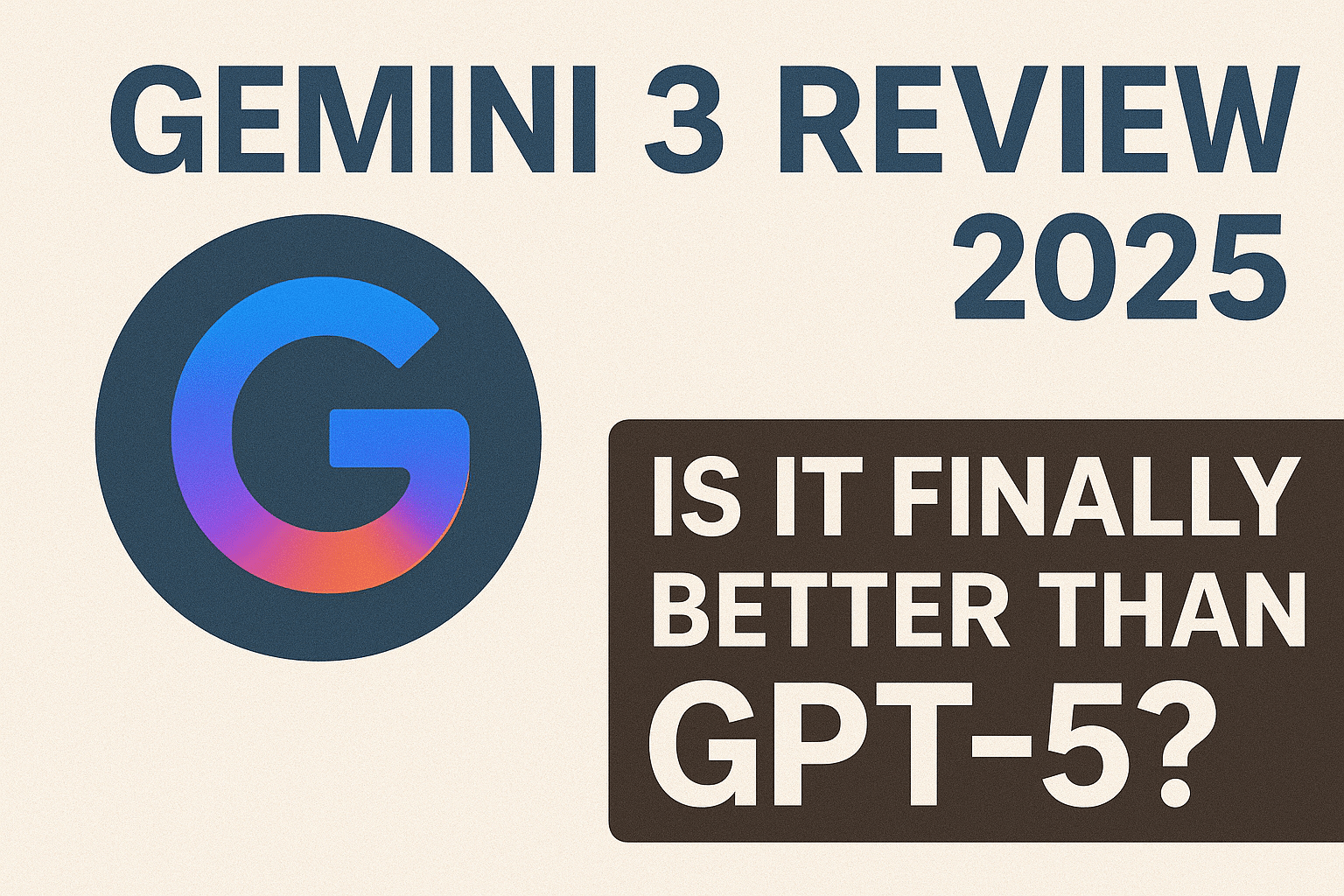

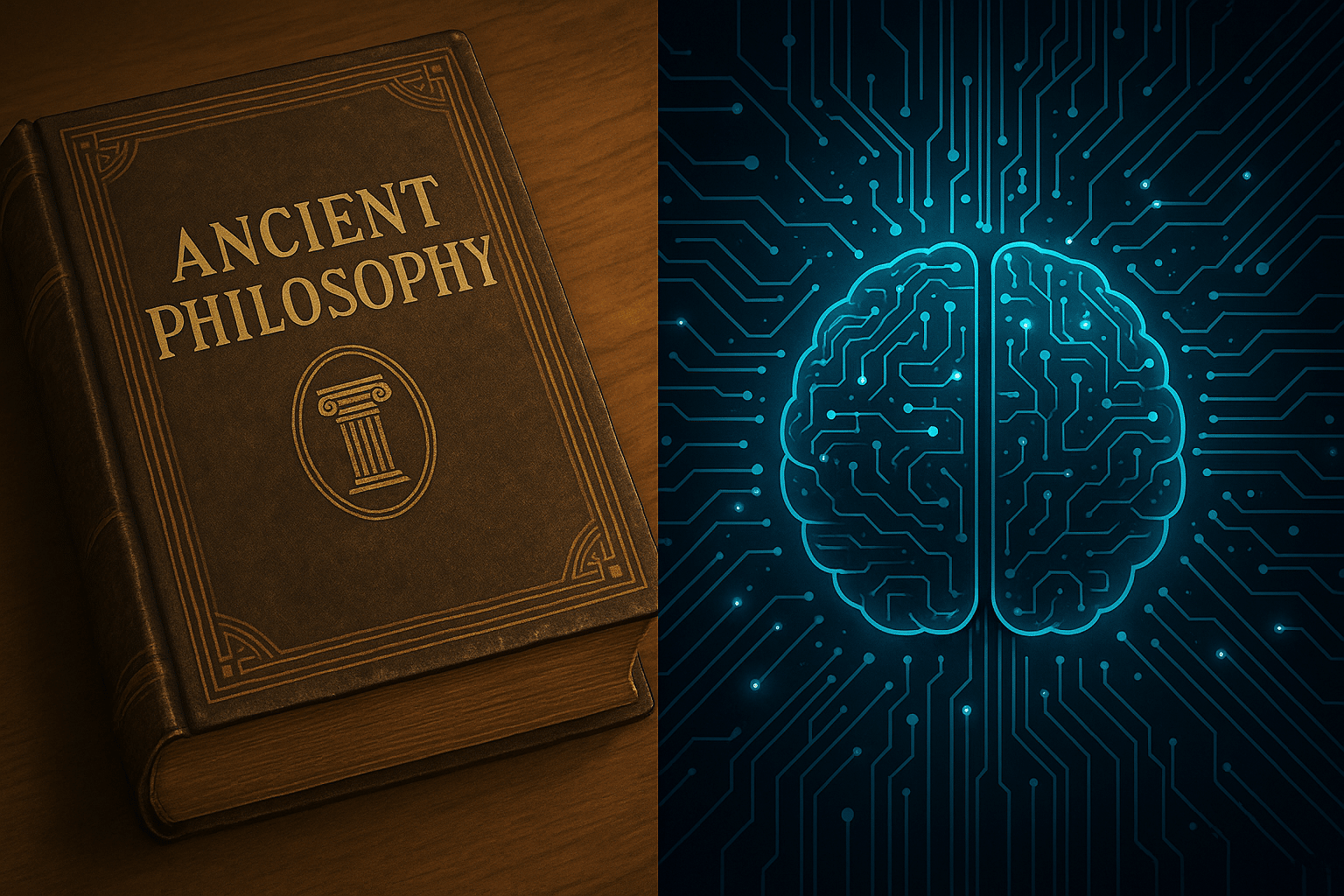





Leave a Reply